The OnePlus 13s marks a strong comeback for OnePlus, combining the brand’s hallmark “Never Settle” philosophy with a compact design that’s uncommon in today’s flagship market. Its sleek design, powerful Snapdragon 8 Elite chipset, and exceptional battery life make it a standout choice for users who want a premium smartphone that’s easy to carry. The Plus Key adds a layer of customization that enhances usability, and the cameras deliver impressive results. However, the lack of an ultrawide lens and wireless charging are minor drawbacks.
During my time with the OnePlus 13s, I found it to be a reliable daily driver. Whether I was gaming, editing photos with AI tools, or binge-watching videos, the phone handled everything with ease. The compact size made it comfortable for one-handed use, and the battery life gave me the confidence to get through a busy day without needing to reach for a charger. While the AI features aren’t as polished as Google’s, they’re practical and add value to the overall experience.
If you’re searching for a compact and powerful smartphone that offers a wealth of features, the OnePlus 13s is a great choice that warrants your attention.
The Good
- Light and easy to carry.
- Handles multitasking and gaming effortlessly.
- Vibrant AMOLED screen with a high refresh rate.
- Plus key Allows personalized shortcuts for convenience.
The Bad
- Less water resistance compared to OnePlus 13.
- Warms up during extended gaming.
- Dual-camera may not satisfy advanced users.
-
Build & Design
-
Performance
-
Camera
-
Battery
-
AI
OnePlus has long been known for delivering flagship performance at competitive prices, earning a loyal fanbase with its “Never Settle” ethos. With the OnePlus 13 series already setting a high bar in 2025, the OnePlus 13s enters the scene as a compact addition tailored for users who prefer a smaller, pocket-friendly smartphone without sacrificing power or features. As someone who values portability but demands top-tier performance, I was eager to test the OnePlus 13s to see if it lives up to the brand’s legacy. Does this compact flagship bring back the charm that made OnePlus a standout in the crowded smartphone market? After two weeks of using it as my daily driver, here’s my in-depth review.
Design and Build
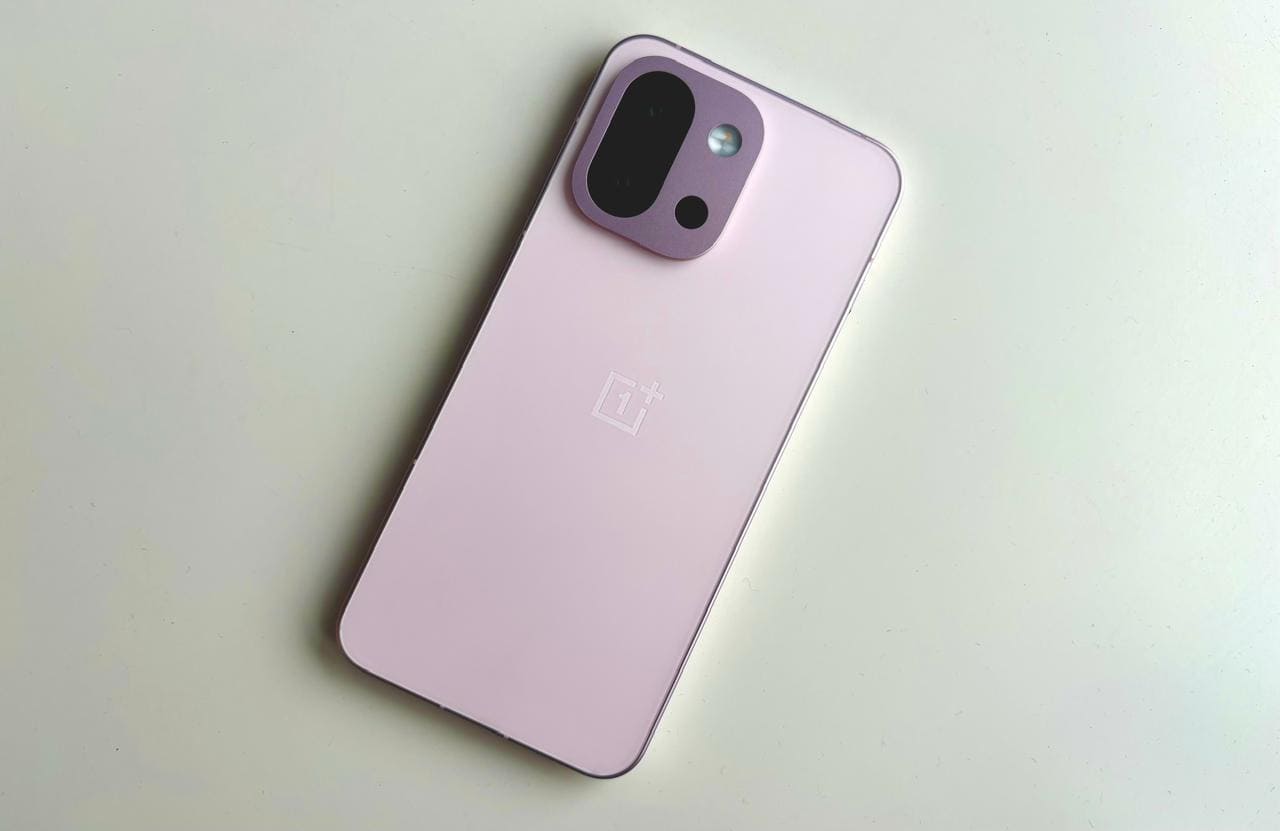
At first glance, the OnePlus 13s feels like a love letter to compact smartphone enthusiasts. Its design borrows from premium flagships like the iPhone and Pixel 9 Pro, blending flat sides with a refined, modern aesthetic. The matte glass back is a standout feature, resisting fingerprints and smudges while feeling luxurious in the hand. The Pink satin variant I tested had a soft matte texture that was both grippy and premium, similar to the feel of Apple’s iPhone 16. The OnePlus logo is subtly etched on the back, maintaining a minimalist vibe.
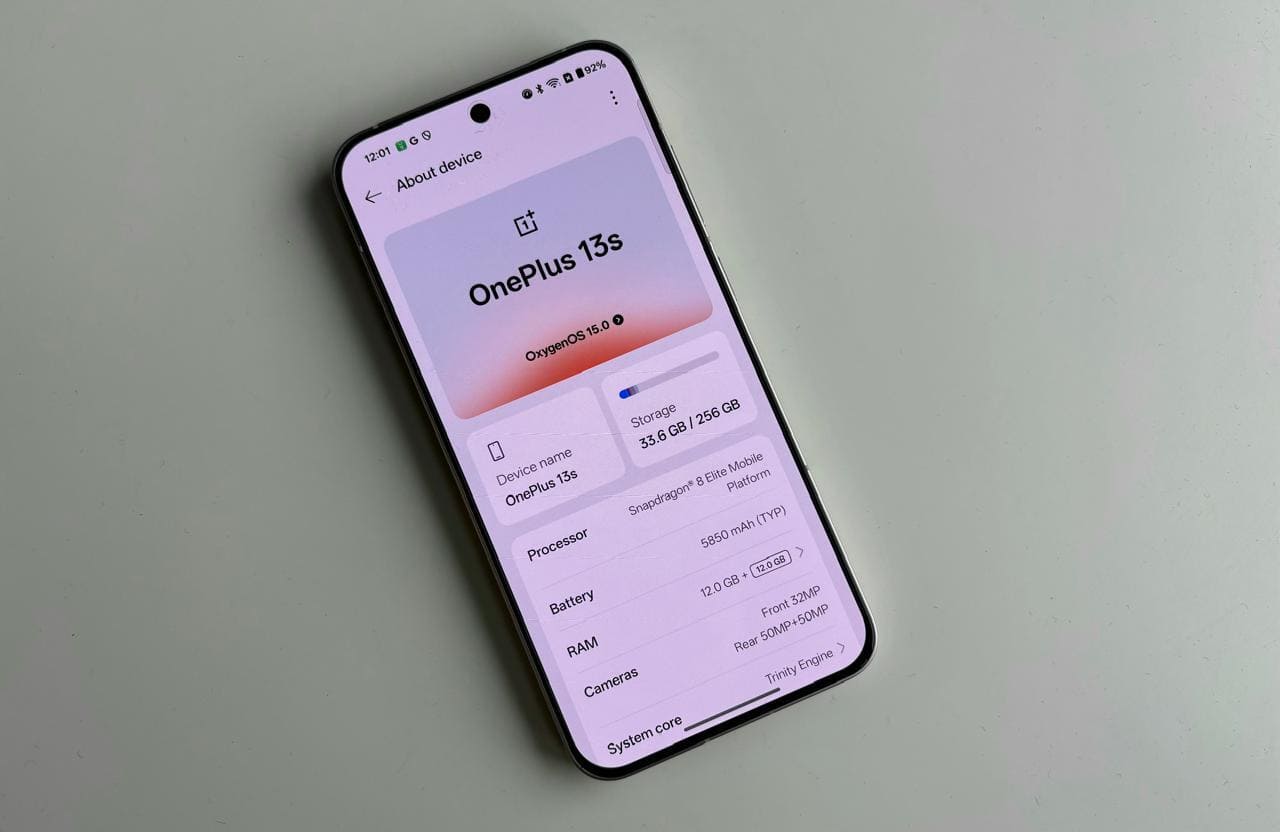
The front features a 6.32-inch LTPO AMOLED display with FullHD+ resolution and narrow, symmetrical bezels, giving the phone a premium, edge-to-edge feel. The flat display is protected by Crystal Shield Glass, which promises excellent scratch resistance and durability. At 185g and 8.2mm thick, the OnePlus 13s feels surprisingly light and well-balanced despite packing a massive battery.
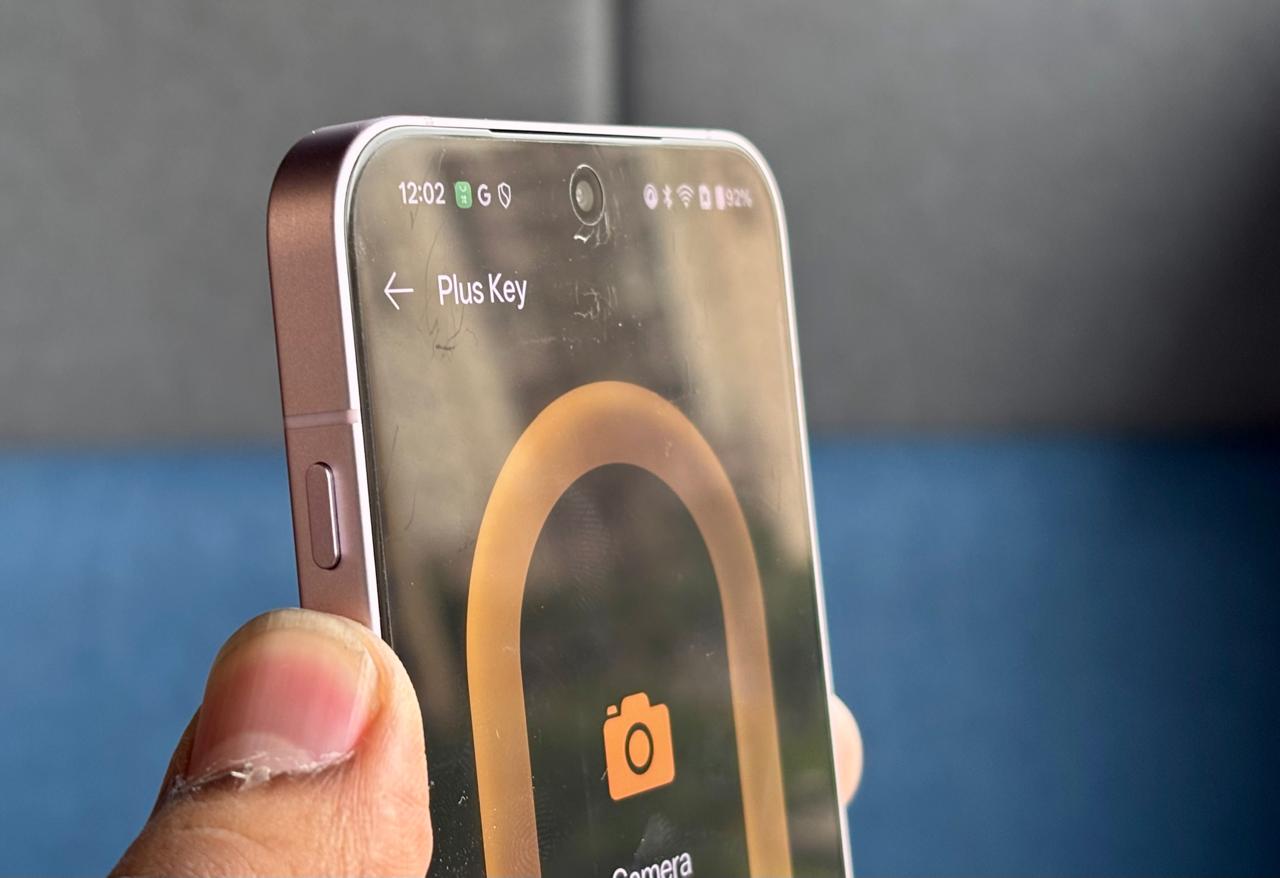
One of the most intriguing design changes is the replacement of the iconic Alert Slider with the new “Plus Key”. This customizable button, inspired by the iPhone 16’s Action Button, allows users to assign various functions like taking screenshots, toggling the flashlight, switching sound profiles, or launching apps. During my testing, I set the Plus Key to open the camera, which added a layer of convenience to my daily routine. While I initially missed the tactile satisfaction of the Alert Slider, the Plus Key’s versatility won me over.
The OnePlus 13s also boasts an IP65 rating for dust and water resistance, a slight downgrade from the IP68 ratings of the OnePlus 13. While it’s not as robust as its sibling, it still offers decent protection against splashes and dust, making it reliable for everyday use.
Performance
The OnePlus 13s is powered by the Qualcomm Snapdragon 8 Elite chipset, one of the most powerful processors available in 2025. With 12GB of RAM and 256GB of UFS 4.0 storage, this phone is an absolute performance powerhouse. A 16GB/512GB option is also available. During my two weeks of testing, the OnePlus 13s handled everything I threw at it with ease. From multitasking with multiple apps, like Chrome, WhatsApp, and Spotify, running in the background to editing photos and videos, the device remained snappy and lag-free.
For gaming, the OnePlus 13s is a beast. I played Battlegrounds Mobile India (BGMI) on high settings, and the experience was buttery smooth, with no frame drops or stuttering. The 120Hz refresh rate and responsive touch sampling made every swipe and tap feel instantaneous. However, during extended gaming sessions of over an hour, the phone did warm up slightly, particularly around the camera module. It never became uncomfortably hot, but it’s something to note for hardcore gamers.
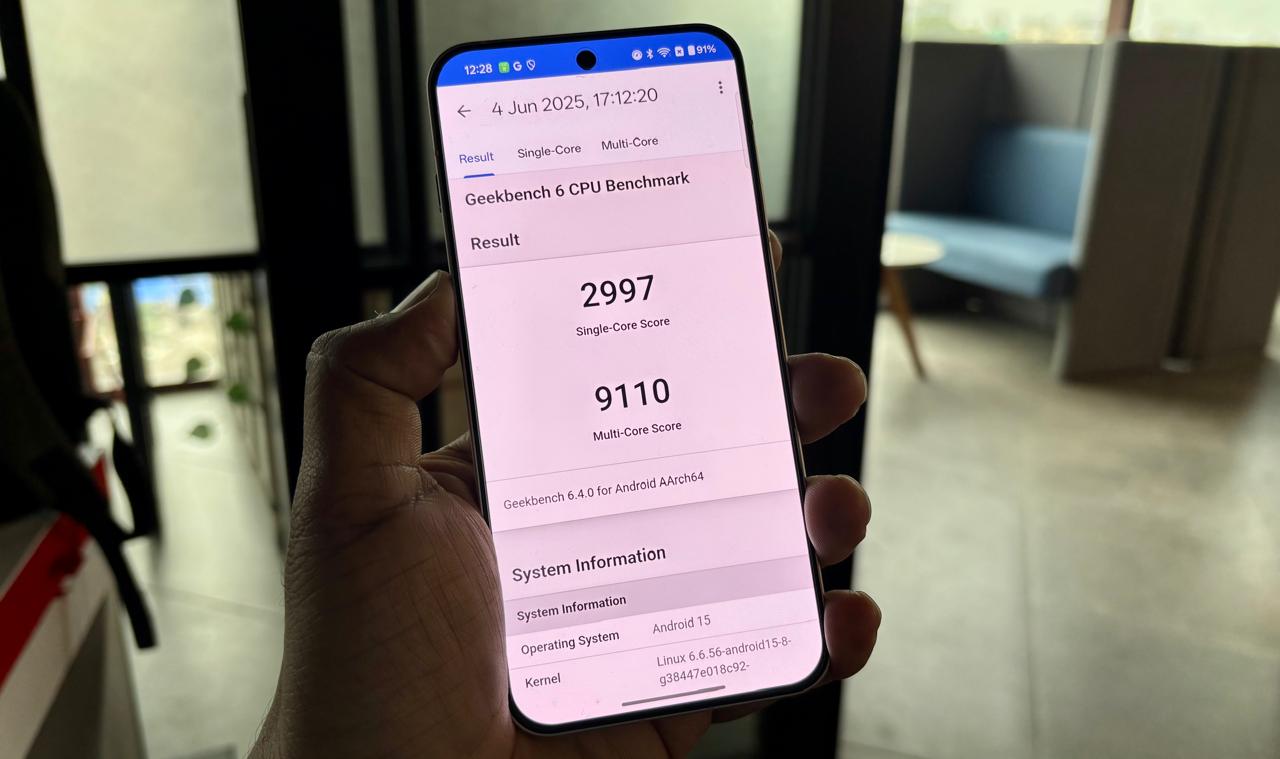
To quantify its performance, I ran Geekbench 6 benchmarks, and the results were impressive. The OnePlus 13s scored 2,997 in single-core and 9,110 in multi-core tests, placing it on par with other 2025 flagships, such as the Samsung Galaxy S25 Ultra. The GPU score of 19,765 further underscores its graphical prowess, making it an excellent choice for gaming and demanding applications. These numbers align with the Snapdragon 8 Elite’s reputation as a top-tier chipset, and in real-world use, the phone lived up to the hype.
AI Features
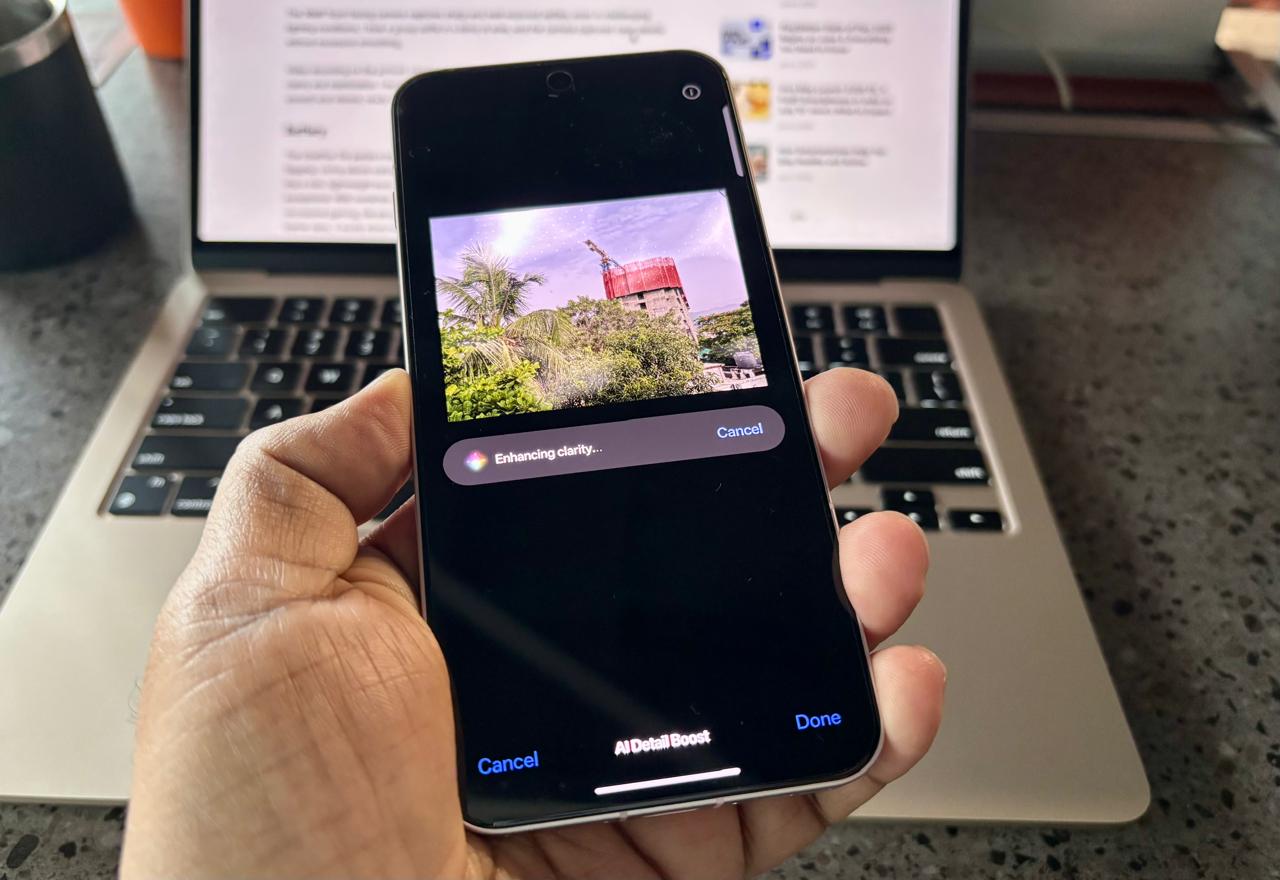
OnePlus has embraced the AI trend with “OnePlus AI,” a suite of intelligent features integrated into OxygenOS 15, which is based on Android 15. While AI capabilities in smartphones can sometimes seem gimmicky, OnePlus has implemented genuinely useful tools that have enhanced my experience. One standout feature is AI Photo Editing, particularly the AI Erase function, which allowed me to effortlessly remove unwanted objects from photos, such as photobombers or clutter. For example, I used it to clean up a crowded beach photo, and the results were seamless, with the AI effectively filling in the background. Additionally, the AI Detail Boost improved low-resolution images, making older photos appear sharper when shared on social media. Another helpful feature is the AI Writing Assistant, which assisted me in drafting emails and messages with polished language and tone suggestions. This was especially beneficial for composing professional emails on the go, as it provided concise phrasing without altering my intended message.
Camera
The OnePlus 13s sports a dual-camera setup, a departure from the triple-camera systems of its larger siblings. It features a 50MP primary sensor with AI optimization, paired with a 50MP telephoto lens offering 4x optical zoom. While the absence of an ultrawide lens is noticeable (I missed it for scenic landscapes), the main and telephoto cameras deliver impressive results.
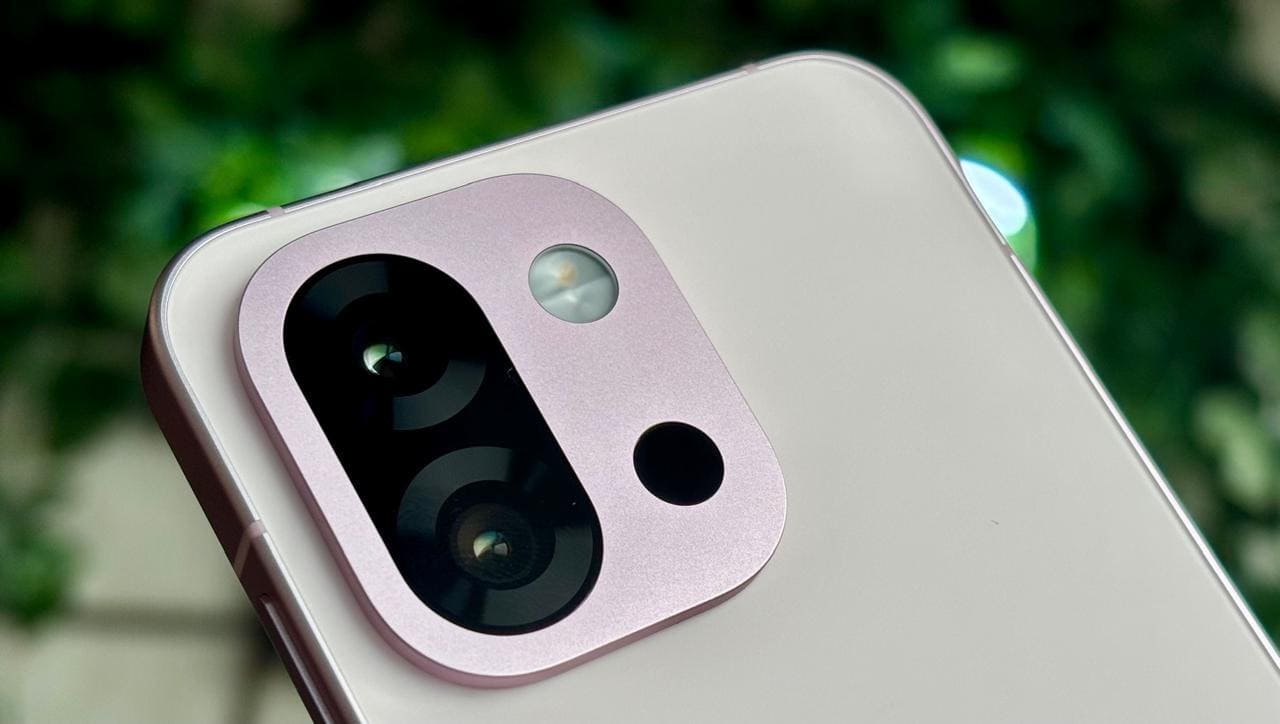
In daylight, the primary camera captures vibrant, detailed shots with accurate colours and excellent dynamic range. I took photos during the day, and the images showcased sharp details. Low-light performance is equally admirable. A night photo of a cityscape retained details, though it’s not quite on par with the Google Pixel 9 Pro XL’s low-light mastery.
The 4x telephoto lens is great for portraits and zoomed-in shots, delivering crisp images with pleasing bokeh. However, the digital zoom beyond 4x starts to lose quality, and at 20x, the images are grainy and lack detail. For comparison, the OnePlus 13’s 3x telephoto with AI-enhanced 120x zoom performs better, but for a compact phone, the 13s holds its own.
The 16MP front-facing camera captures sharp and well-exposed selfies, even in challenging lighting conditions. I took a group selfie in a dimly lit area, and the camera captured clear details without excessive smoothing.
Video recording on the primary camera is a highlight, supporting 4K at 60fps with excellent clarity and stabilization. I recorded a short video for Instagram Reels, and the footage was smooth and vibrant, ready to post without additional editing.
Battery
The OnePlus 13s packs a remarkable 6,260mAh battery, one of the largest in a compact flagship. Using silicon-carbon technology, OnePlus has managed to fit a high-capacity battery into a slim, lightweight body, a significant engineering feat. In my testing, the battery life was exceptional. With moderate use, including social media, streaming music, browsing, and occasional gaming, the phone lasted over a day, with about 30% of its charge remaining. On lighter days, it easily stretched into the second day.
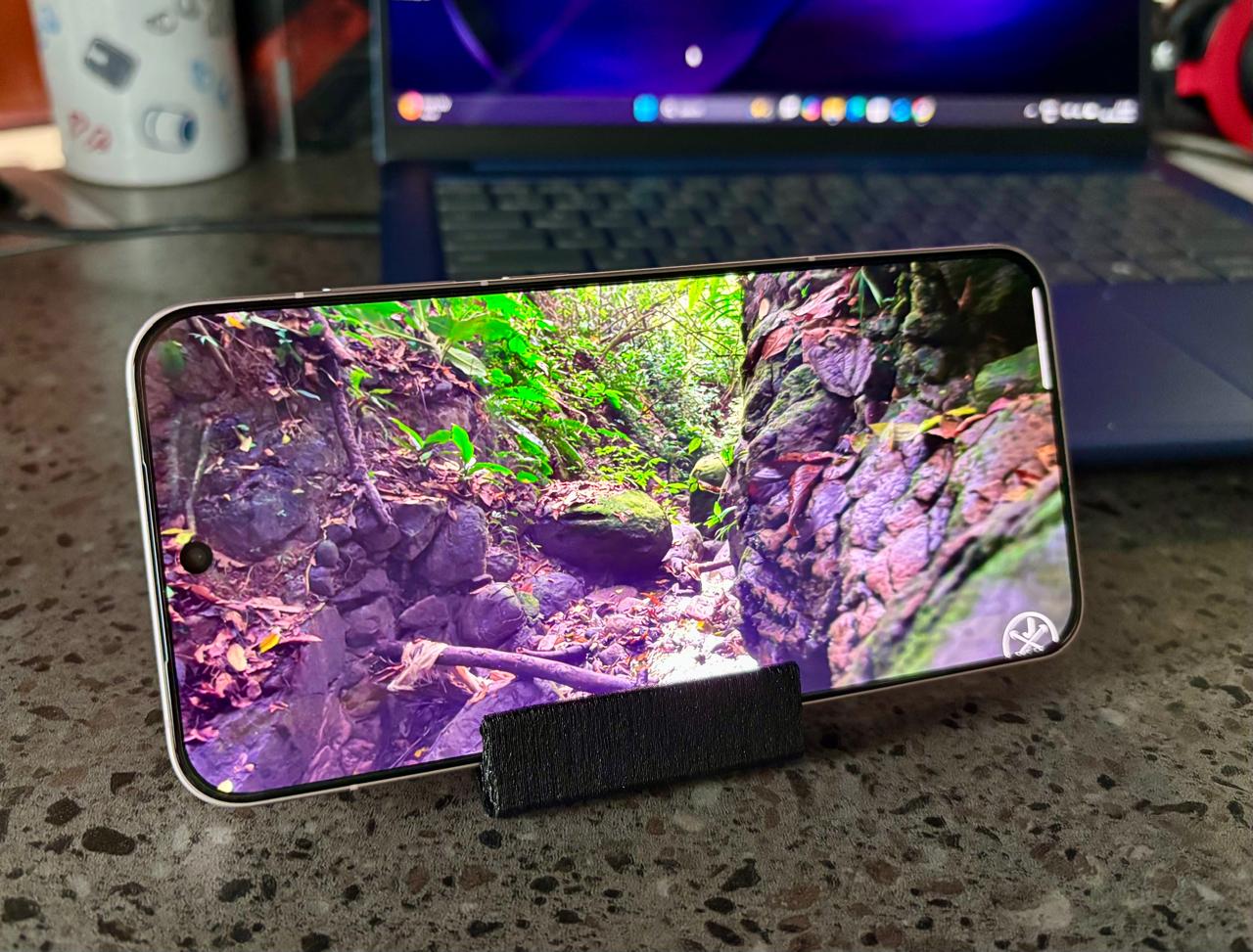
To test its endurance, I ran a 4K video playback test for 30 minutes, and the battery dropped by just 5%. This means you could watch an entire movie or binge a few episodes of a series without worrying about running out of juice. In another test, I used the phone heavily for gaming and navigation, and it still lasted a full day with about 15% charge left by bedtime.
Charging is another area where the OnePlus 13s shines. It supports 80W SuperVOOC wired charging, and OnePlus includes an 80W charger and cable in the box, a rarity in 2025. The phone charged from 0% to 56% in 15 minutes and reached 100% in about 36 minutes, which is blazing fast. Unfortunately, the lack of wireless charging is a notable omission, primarily since the OnePlus 13 supports 50W wireless charging. For a compact flagship priced around ₹55,000, this feels like a missed opportunity.


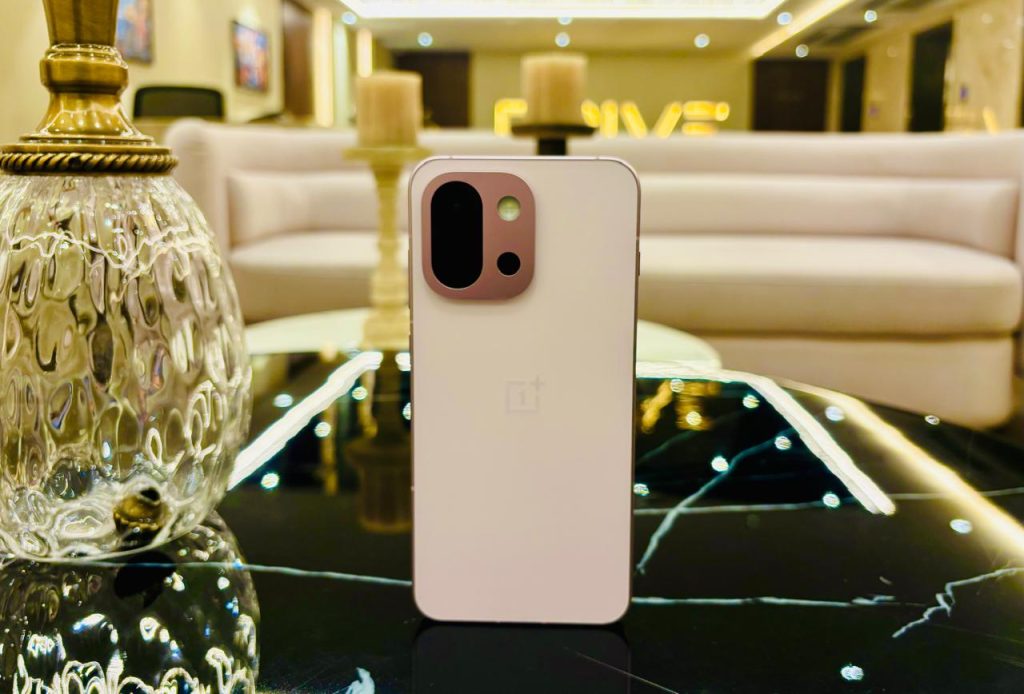








2 Comments
Pingback: OPPO K13x 5G Set to Launch in India with Focus on Durability
Pingback: OnePlus Pad 3 Review: Big Ambitions, Bigger Display